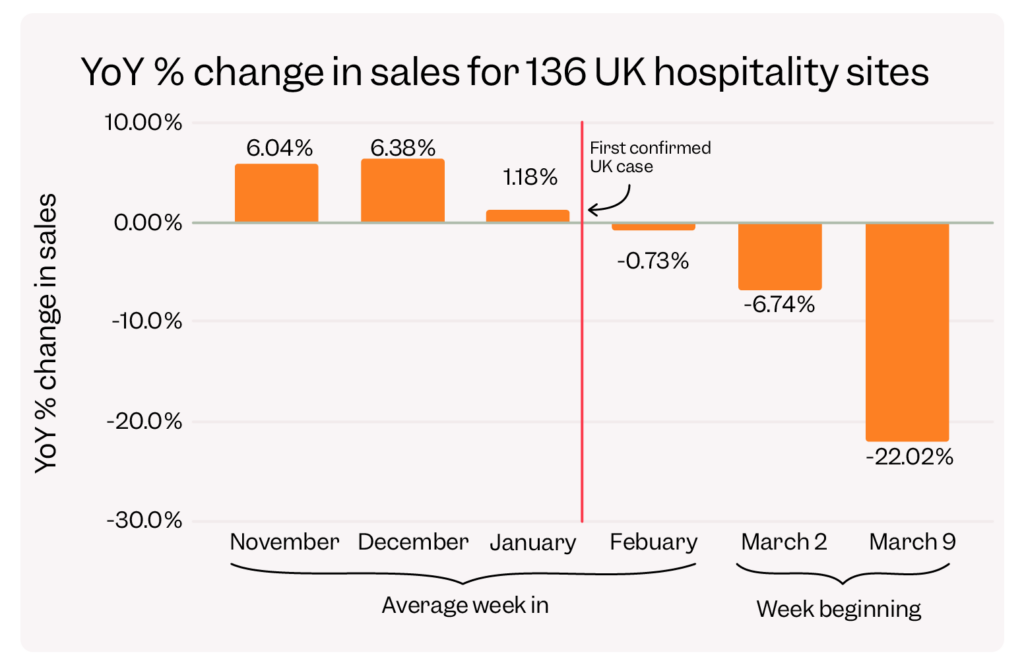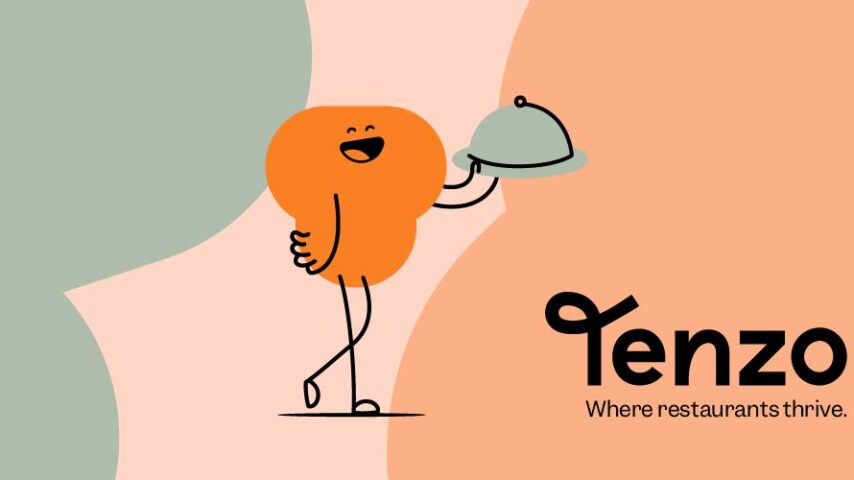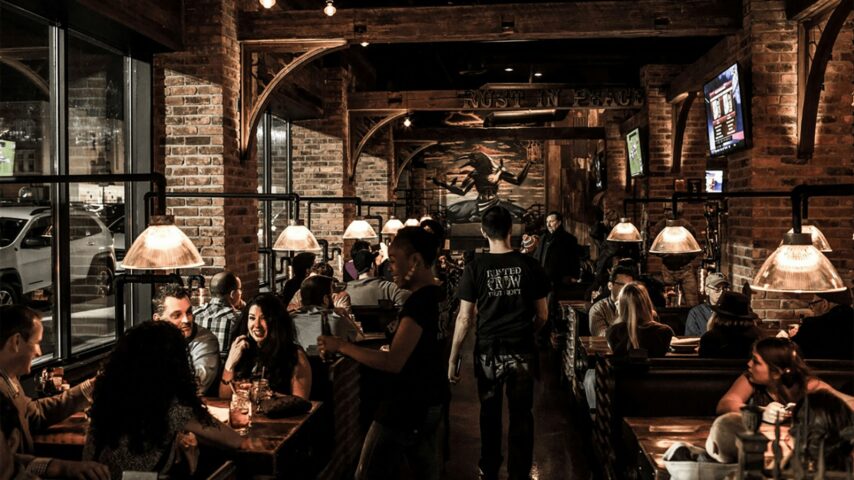In this article
As you are no doubt aware, Coronavirus has had an enormous impact on the hospitality sector over the last couple of weeks. With fewer people venturing out due to fears of infection and social distancing being encouraged; restaurants, bars and cafes have been some of the worst-hit businesses. In light of this, we decided to deep dive into the numbers and see exactly how this new pandemic is affecting the industry.

Pre-Corona
We looked at a sample of 136 restaurants in and around London and Southern England, including multi-site and single-site quick service, fine dining, and casual dining restaurants, pubs, and cafes. Tenzo customers tend to be fast-growing businesses and their numbers for an average week in November and December reflect this. On average these locations saw year-on-year sales grow by 6.04% for an average week in November, and 6.4% in December.
January was definitely considered a tough month with flooding and extreme rainfall deterring people from going out; yet these locations still saw growth of 1.18% on average for the month.
However, come January 31st, when the first UK case of the virus was reported, restaurants saw their growth teeter. February’s year-on-year growth was down 0.73% on average as people began to feel more wary about surrounding themselves with strangers and their potential germs. But as the first week of March rolled around, many offices had imposed work-from-home policies and the time for social distancing had arrived.
Corona arrives
After the arrival of the virus, average YoY sales for the first week in March dropped 6.74%, which translates to an average reduction in sales of £1,883 per location. The second week of March saw sales drop even more significantly, with year-on-year sales down 22%. Unfortunately, cafes look to have been hit hardest with their growth dropping 25%, likely due to the amount of people working from home and foregoing their morning caffeine fix en route to work.
Restaurant budgets also took a big hit. While budgets are admittedly usually more aspirational than attainable, many restaurants saw the first and second week of March close with sales numbers way below what was hoped for with the average location ending up 11.29% under what they had wanted in the first week of March and 25.85% in the second.
Delivery vs Eat in
As you might expect, we have seen an uptick of diners choosing delivery and takeaway options over eating-in. However, while sales for delivery were up 21.7% year-on-year in the first week of March, we saw a drop in the second week with delivery only up 10.84% compared to last year. While this growth is still a good thing, it is worrying that it seems to be dropping off and might mean that customers are more wary of consuming food that they haven’t prepared themselves.
It is nevertheless comforting to know that delivery services are attempting to stay as safe as possible. Deliveroo, for example, have taken precautions to avoid spreading the virus, including introducing a ‘no-contact drop-off’ option to eliminate unnecessary contact between delivery drivers and customers.
Needless to say, if your restaurant hasn’t traditionally offered delivery, it might be time to consider it. Changing your core-concept might seem like a drastic move but in these drastic conditions, it may help you to survive and continue paying your employees.. Food is the ultimate comfort in times like these and your diners are sure to be craving their favourites even if they can’t leave the house.
Conclusion
This is undoubtedly a very uncertain time for the hospitality sector as a whole and unfortunately, it is unlikely to end very soon. As such, the most important thing at the moment is to ensure that everyone stays as healthy as possible. In terms of business, our tip is to focus on delivery and takeaway business, and minimising costs, to help with cash flow while the situation is brought under control.
It’s important to remember that this industry is extremely resilient and once this virus has been contained we’re sure it will bounce back stronger than ever. In the meantime, take whatever actions available to you that will increase your chances of staying afloat. We have published our current advice here.




